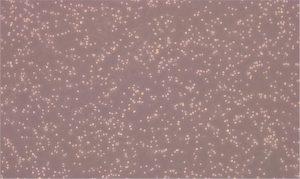Currently available recombinant alternatives to horseshoe crab blood lysates:
Are they comparable for the detection of environmental bacterial endotoxins?

The most commonly used method for detecting endotoxin in biological drugs are the Limulus amebocyte Lysate (LAL) based kinetic assays, however, this has not always been the case. Originally, the rabbit was used to test drugs for absence of fever-inducing substances. This Rabbit Pyrogen Test (RPT) only fell out of routine use once the LAL-based bacterial endotoxin test (BET) was developed and proven to be a suitable replacement that was practically superior and much more sensitive. A new method is now available which is based on the same reaction principle as LAL but is produced without the need for animal-derived raw material. This new method is based on recombinant production of Factor C, the same protein that is used in the LAL assay. Therefore, it is important to evaluate the use of these recombinant technologies which may expand and potentially improve the quality of endotoxin testing. These recombinant technologies may also bring additional ethical and ecological benefits by using non-animal materials.
Peer-reviewed literature was evaluated comparing results obtained with recombinant reagents to those with LAL and also TAL (Tachypleus amebocyte Lysate). In particular, the authors sought to establish if results using rFC were equivalent to or better than those with LAL/TAL. A critical review of available data, with special consideration of studies in which naturally contaminated samples were tested side by side, was performed to determine if results using rFC were equivalent to or better than those with LAL/TAL.
Comparing results of rFC and LAL tests requires careful study design in order to reach accurate conclusions. Studies of this nature are inherently difficult to conduct because the variation in results within any type of endotoxin testing is relatively high due to the very low (sub-picogram) level tested and the tremendous sensitivity of the assay. As a consequence, large dilutions of standards and samples are necessary to obtain results in range of the assay and minor differences in procedure (temperature, mixing time and operators) result in significant variation even when the same LAL method is used on the same samples at the same time in the same laboratory. Therefore, this review put more weight on those laboratories that controlled for these well-known variables.
In the publications cited, different types of sample material (from airborne samples to biological products) were analysed with both rFC and LAL methods. The analyte was often a real microbial contamination, however, endotoxin preparations like CSE, RSE or NOE were also used in some cases. In all publications listed, there was a good correlation between recombinant Factor C based methods and LAL.
The authors expect that further studies are likely to arrive at the same conclusion that rFC and LAL produce comparable results, as long as the study accounts for the specificity of LAL with respect to beta glucans. Although the false-positive pathway activation of LAL can be mitigated with glucan blocking buffers, these buffers may not block all of the glucan interference or all types of glucans, which may account for some data in which LAL has detected higher concentrations of endotoxin than rFC in natural waters, for example.
Feel free to learn more about recombinant Factor C and its specificity to endotoxin on our website.
Written by SST
Reference
Jay Bolden, Chris Knutsen, Jack Levin, Catherine Milne, Tina Morris, Ned Mozier, Ingo Spreitzer, Friedrich von Wintzingerode. Currently Available Recombinant Alternatives to Horseshoe Crab Blood Lysates: Are They Comparable for the Detection of Environmental Bacterial Endotoxins? A Review. PDA J Pharm Sci Technol. Sep-Oct 2020;74(5):602-611




